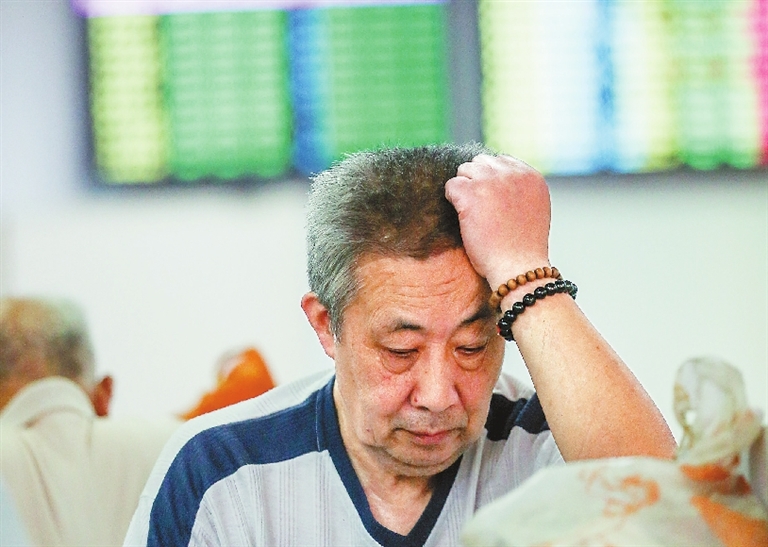
CHINA’S main equity indexes finished lower yesterday and the yuan weakened to a four-month low as investors’ hopes for a deal to end an escalating trade spat between the United States and China were dashed by signs of a stalemate in trade negotiations. The benchmark Shanghai Composite Index ended the day down 1.2 percent and the blue-chip CSI300 index lost 1.7 percent, resuming the previous week’s downward slide. For the month, the Shanghai Composite is down 5.7 percent, while the CSI300 has lost 6.2 percent. The risk of U.S.-China talks breaking down and the two “settling down into an indefinite economic war of attrition is now uncomfortably high,” Arthur Kroeber, founder of Gavekal Dragonomics, said in a note. “The deeper that both sides entrench themselves in their political story lines, the more that risk will grow,” he added. Losses in the CSI300 yesterday were led by financial firms, which dropped 2 percent. The consumer staples sector ended down 0.06 percent, the real estate index lost 0.43 percent and the health care sub-index fell 0.58 percent. While they recorded sharp losses for the whole of last week, both the Shanghai Composite and CSI300 surged more than 3 percent Friday, lifted by hopes that the continuation of talks could bring an agreement between China and the United States, despite U.S. President Donald Trump hiking tariffs on US$200 billion worth of Chinese goods. But those hopes ebbed yesterday as China and the United States appeared to be at an impasse. With no signs of a quick solution in sight, investors continued to await China’s response to the higher tariffs. China’s foreign ministry said yesterday the country will never surrender to foreign pressure, but declined to comment on what countermeasures China planned in response to the tariff hike. Investors are watching to see how Chinese policymakers plan to offset the impact of the stiffer tariffs on both the economy and financial markets, analysts at Citi said, adding that China’s options include support for stock markets and the yuan, as well as monetary policy measures and liquidity injections. The smaller Shenzhen index ended 1.1 percent lower and the startup board ChiNext Composite index dropped 2 percent. Worries over the trade impasse also hit China’s currency, which was dragged lower by heavy corporate demand for the greenback. Prior to the market open, the People’s Bank of China lowered the official midpoint of the yuan’s daily trading band to 6.7954 per dollar, weaker than the previous fix, but much stronger than market expectations. The central bank had also surprised the market with a stronger-than-expected fix Friday. In the spot market, onshore yuan opened at 6.8459 per dollar and was changing hands at 6.8670 by press time, 470 pips weaker than the previous late session close. “Many market participants had hoped that Trump’s tariff hike threats were just his negotiation tactics last week. But now tariffs are higher,” said a trader at a Chinese bank, noting that the talks appeared stalemated. Selling pressure on the yuan was heavy in the morning, several traders said, as many corporate clients showed rising interest to load up on dollars. Companies that were debating whether to liquidate their long U.S. dollar positions last week were unwilling to sell dollars, awaiting better prices, they said. Offshore yuan weakened past 6.9 to the dollar to a low of 6.9048 at one point in afternoon trade, its weakest level since Dec. 24. (SD-Agencies) | 
